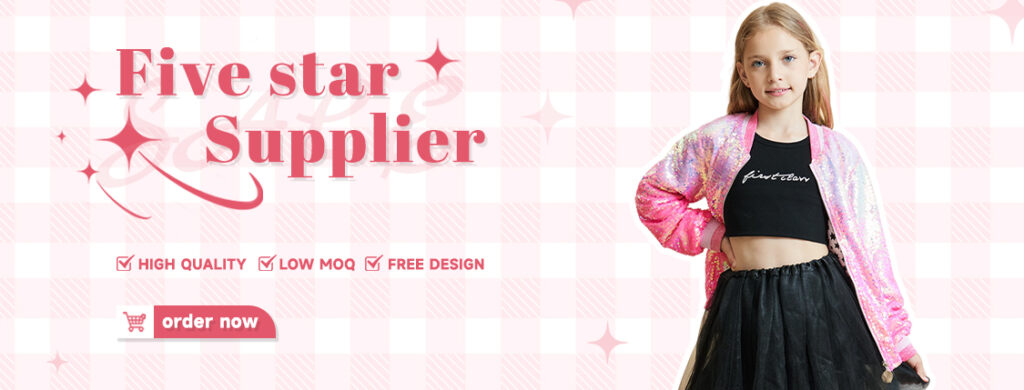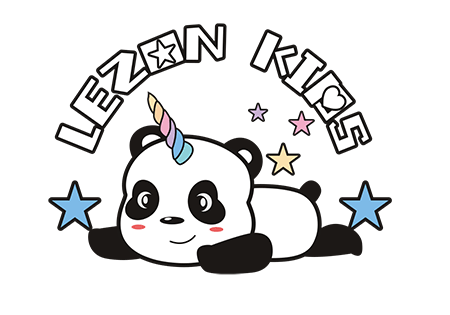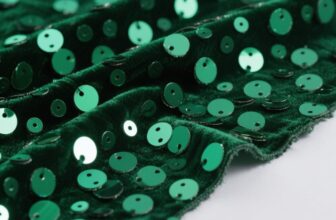5 Things You Should Know About Wholesale Children’s Clothing
In the highly competitive children’s clothing market, accurately grasping the industry trends and establishing a scientific purchasing system are the keys for retailers to build their core competitiveness. LEZONKIDS, a children’s clothing wholesale chain expert with 15 years of OEM/ODM experience. Which has extracted the following 5 key dimensions for wholesale decisions, combining real industry data and practical experience, to help retailers effectively avoid risks and achieve significant improvements in business efficiency.

Industry Status and Trends: Foreseeing the Future through Data
Continuous Expansion of Market Scale
According to authoritative data from Statista in 2023, the global children’s clothing market is on a booming upward track, with a stable annual compound growth rate of 4.8%. China, as the global leader in children’s clothing production, accounts for 35% of the world’s output, playing a pivotal role in the international children’s clothing industry landscape.
In this overall growth trend, the medium and large children’s clothing category for ages 3 – 12 has emerged as a strong growth segment, developing rapidly at a high growth rate of 7.2%, presenting a sharp contrast to the growth trend of infant and toddler clothing. This data difference provides crucial guidance for retailers’ category layout: For children’s clothing boutiques that pursue high quality and high added value, focusing on a single age group of children’s clothing and carefully crafting a unique packaging and brand image can help increase product unit prices and brand recognition.
Conversely, if a retail store adopts a low – price strategy to attract customers. Purchasing a comprehensive range of children’s clothing for all age groups is necessary to attract diverse customers and meet different demands.

Dual Upgrades in Consumer Demands
- Burst of Functional Innovation: With the deep integration of technology and textile technology, the application of functional fabrics in the children’s clothing field has been on the rise. Data from the China National Textile and Apparel Council shows that the usage rate of functional fabrics such as waterproof and breathable, antibacterial and anti – microbial fabrics has soared by 120% over a certain period. Behind this transformation is consumers’ higher pursuit of the quality and practicality of children’s clothing. During the purchasing process, retailers must request relevant functional test reports from suppliers to ensure the authenticity and effectiveness of the functional characteristics of the purchased clothing, thus meeting parents’ dual expectations for their children’s wearing comfort and health protection.
- Iteration of Design Aesthetics: Market research has found that during festival seasons. Children’s clothing with sequin and bead decorations experiences a significant sales increase of 40 – 60%. However, traditional sewing processes are prone to thread shedding. Which not only affects the appearance but may also pose a safety hazard. To solve this problem, the ultrasonic hot – pressing process has become an ideal choice, as it can ensure that the decorations are firmly attached. Meeting children’s demands for clothing decoration while ensuring wearing safety. This requires retailers to not only pay attention to the fashion sense of the design when selecting products but also focus on the impact of process details on product quality.

Key Purchase Elements: Value Judgment Beyond Price
In the selection process of children’s clothing wholesale. Process details are crucial factors that determine success or failure, having a profound impact on product quality and market feedback.
- Adhesion Test: Conduct a 3 – direction tensile test with a force of 5N (simulating children’s pulling force), and the dropout rate should be ≤0.5%.
- Edge Treatment Standard: The burrs of sequins cut by laser should be controlled within 0.1mm to avoid the risk of scratching.
- Cost Optimization Plan: On the premise of ensuring product quality and aesthetics, rationally optimizing the production process can effectively control costs. For example, using machine – embroidered beads for the main pattern production to take advantage of its high – efficiency and regular features, and adopting manual positioning for decorative parts can not only highlight the delicate sense of the design but also reduce the labor cost by 15 – 20%, achieving a balance between cost and quality. A regional chain brand successfully reduced the customer return rate from 5.3% to 1.8% through the upgrade of the sequin sewing process, and its annual net profit increased by 270,000 yuan as a result, becoming a powerful example of how process optimization can enhance economic benefits.

Order Quantity and Cost Control: The Survival Rule in the Small – Order Era
Ⅰ、The Business Logic of a 50 – Piece Minimum Order Quantity
The traditional model where wholesale often require a minimum order quantity of 300 – 500 pieces poses many difficulties for retailers in their operations. On the one hand, the risk of single – style unsalable products soars by 64% (data from Fashion Institute research). Once the market responds poorly to a certain style of clothing. A large amount of inventory backlog will seriously occupy funds and storage space. On the other hand, the inventory turnover cycle is extended to 8 – 12 months, greatly reducing the capital liquidity and operational efficiency.
In contrast, the 50 – piece flexible minimum order quantity model brings new vitality to retailers. During the test period, the initial trial – sale investment can be reduced by 82%, greatly reducing the market trial – and – error cost, allowing retailers to explore market demands at a relatively low cost. At the same time, this model also endows products with the advantage of rapid iteration. The quarterly new product launch frequency has increased from 2 times to 5 times. Ensuring that stores can promptly respond to market trend changes, always maintain the freshness and attractiveness of products. And meet the increasingly diverse and changeable needs of consumers.
Ⅱ、Application of the Tiered Pricing Model
| Order Quantity (pieces) | 50 – 100 | 101 – 300 | 301 – 500 |
| Unit Price Gradient | Base Price | -12% | -18% |
| Suggested Strategy | Testing Phase | Replenishment of Main Styles | Quantity Boost for Best – Sellers |
In actual purchasing operations, combined with the free sample – making service provided by wholesale, retailers can reduce the trial – and – error cost to one – fifth of the traditional model. During the testing phase, place small – batch orders of 50 – 100 pieces to test the market, and accurately judge the product potential based on market feedback. For main styles that receive a good market response, replenish the stock within the order quantity range of 101 – 300 pieces to consolidate the sales advantage. When a certain product becomes a best – seller, increase the order quantity to 301 – 500 pieces to fully utilize the cost advantage of tiered pricing and maximize profits.

Selection of Cooperation Models: Precise Matching of OEM/ODM
Ⅰ、Decision Tree for Model Comparison
| Requirement Scenarios | Cooperative Model Selection | Advantage Explanation |
| With a complete design draft | OEM | It’s worry – free and labor – saving. Retailers only need to hand over the design draft to the manufacturer for production. Without much involvement in the design work during the production process. |
| In need of creative support | ODM | Retailers can obtain free design empowerment and leverage the design team of the manufacturer for product design. |
| In need of IP derivative development | ODM + Co – branding Solution | Retailers can utilize the manufacturer’s resources for IP derivative development. Co – branding can enhance the product’s attractiveness and market competitiveness. |
Ⅱ、Practical Key Points for IP Co – Branding Development
- Authorization Compliance: Select children clothing wholesale with a complete authorization chain (for example, when cooperating with an international anime brand, a 3 – level authorization certificate is required).
- Design Boundaries: To maintain the balance and coordination between the brand and the IP, the industry – wide standard stipulates that the usage area of the character image on the finished garment should not exceed 30%. This restriction can effectively utilize the attractiveness of the IP while ensuring that the clothing’s own design style and brand characteristics are highlighted, avoiding over – reliance on the IP and losing the product’s individuality.
- Premium Strategy: The recommended retail price of co – branded products can be set at 2.8 – 3.5 times the cost, depending on the popularity of the IP.
Success Story: A customer developed a Christmas – themed sequined sweatshirt through ODM, leveraging a classic cartoon IP. The single – style quarterly sales exceeded 12,000 pieces, with a profit margin of 52%.

Supplier Evaluation System: 5 – Dimension Filtering Method
Ⅰ、Core Evaluation Indicators
| Dimension | Weight | Inspection Points |
| Quality Control Ability | 30% | Whether it has the AQL2.5 inspection standard |
| Response Speed | 25% | Sampling cycle ≤ 3 days, mass production delivery ≤ 14 days |
| Design Support | 20% | Provide 3 free optional solutions |
| Cost Control | 15% | Marginal cost advantage with a 50 – piece minimum order quantity |
| Compliance Assurance | 10% | Environmental protection certification and intellectual property certificates |
Ⅱ、Differentiated Advantages of a 15 – Year Supply Chain
- Production Responsiveness: Through modular production line configuration, achieve quick response to small orders (30 – day emergency order channel).
- Design Database: Accumulated more than 2000 sequin/bead – nail process templates, shortening the development cycle.
- Quality Control Traceability Chain: Each finished product is equipped with a unique traceability code. Through which information such as fabric batches and production teams can be queried.

The Decision – Making Formula for Seizing the Initiative
Successful Procurement = (Trend Insight × Safety Factor) + (Cost Control × Flexible Supply)
In the field of children’s clothing wholesale, deeply understanding market trends, combined with rigorous risk control. While taking into account cost – effectiveness and the flexibility of the supply chain, is the core essence of achieving successful procurement. As a senior partner in the industry, LEZONKIDS always adheres to its commitment: providing a low – threshold service.
- With a 50 – piece minimum order quantity to help retailers enter the market with zero inventory pressure
- offering free design and sample – making to reduce upfront investment risks and stimulate innovation
- ensuring 30 – day express delivery to ensure that retailers do not miss any seasonal sales hotspots
- integrating rich IP co – branding resources to open up a mature traffic entrance for products and enhance brand competitiveness.






